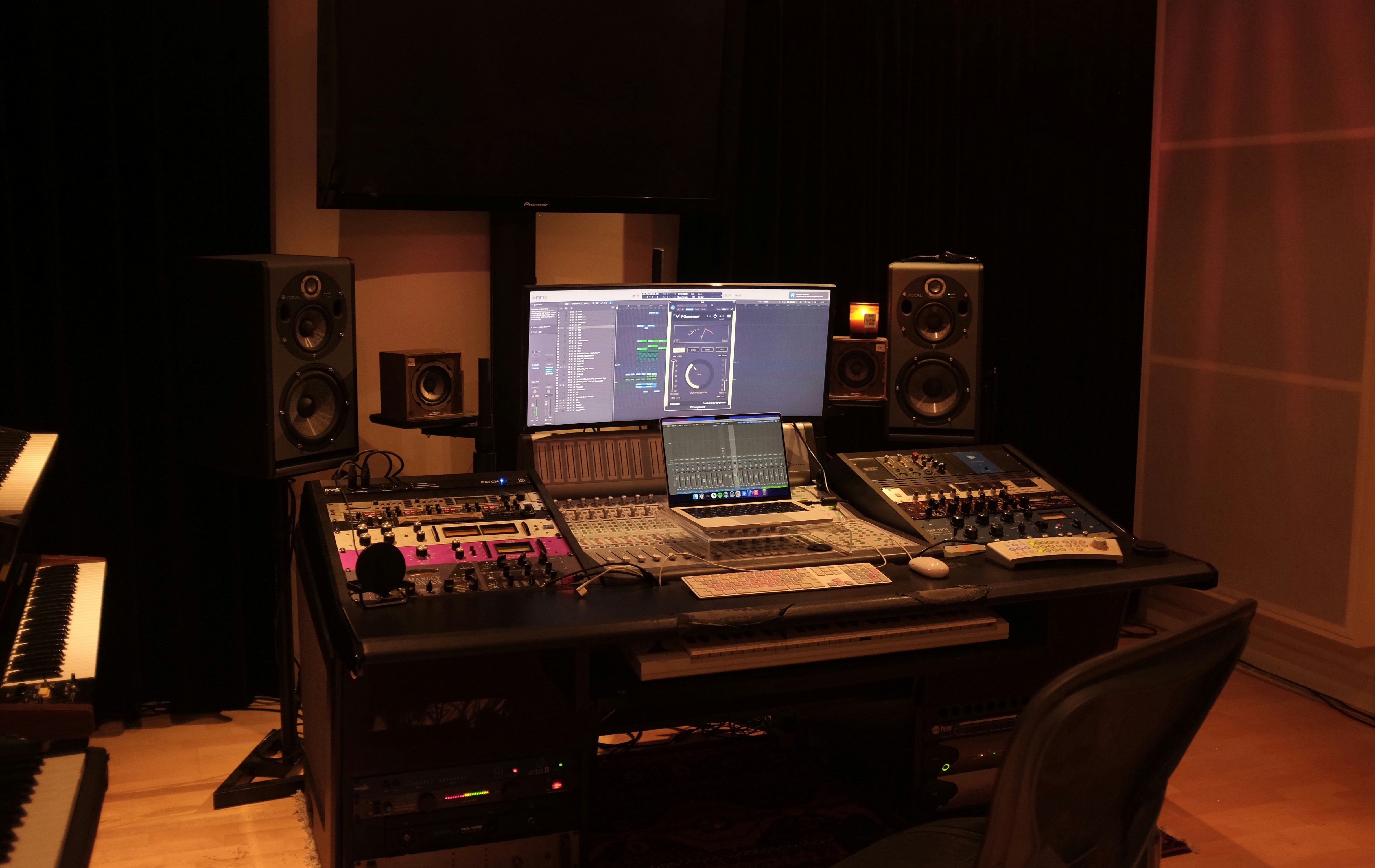Great Composers of the World 1. Hans Zimmer and His Top 10 Tracks
Stella
A&R Manager

Hans Zimmer's Top 10 Tracks and Composition Tips: The Secret Behind Modern Blockbuster Sound
Who is Hans Zimmer?
Hans Florian Zimmer (born 1957) is a German film composer and producer who established the sonic aesthetic of modern blockbusters through the fusion of electronic and orchestral music. Active at the forefront of Hollywood since Rain Man, he won Academy Awards for Best Original Score for The Lion King and Dune, and has contributed to over 150 films including Inception, Interstellar, The Dark Knight, and Gladiator. Through 'Remote Control Productions', he built a collaborative ecosystem, pioneering new sounds with numerous composers, and through long-term partnerships with Christopher Nolan and Denis Villeneuve, elevated bass-heavy physical impact and minimal motivic repetition into cinematic language. Source: Wikipedia
"Zimmer's music is not sound—it's energy. It's designed to directly vibrate the audience's body."
Top 10 Representative Tracks: Themes That Transform Scenes into Experiences
1) Time — Inception
Gradual build-up of piano and strings. In the final montage, time, memory, and emotion explode as one mass.
2) Cornfield Chase — Interstellar
Circular motif of pipe organ and strings. Simultaneously evokes cosmic wonder and the tenderness of family drama.
3) No Time for Caution — Interstellar
The legendary 'docking' scene. The pinnacle of cluster and tension created by organ, brass, and percussion.
4) Now We Are Free (with Lisa Gerrard) — Gladiator
A lyrical ending theme that binds battlefield tragedy and soul liberation through vocal texture and ethnic colors.
5) Chevaliers de Sangreal — The Da Vinci Code
Sublime ascension layering chorus and strings over repeated harmonies. Sonically realizes the sense of 'revelation'.
6) Mombasa — Inception
Percussion and bass ostinato serving as the propulsion engine driving the chase scene.
7) Why So Serious? — The Dark Knight
Dissonant electronics and tone bends representing the Joker's instability and agitation in sound (co-composed: James Newton Howard).
8) Aurora — The Dark Knight Rises
Collective energy of heroic narrative where crowd chants and drums converge.
9) This Land — The Lion King
Intersection of African rhythms and lyrical strings. Emotional arc encompassing nature, kingship, and growth.
10) Dune (Main Theme) — Dune
Hybrid of otherworldly vocals, Middle Eastern percussion, and synths. Transcendent scale of a massive desert world.
Core Point: Lows, ostinato, and hybrid textures design the physical tension and narrative energy of scenes.
Field-Ready 'Zimmer-Style' Composition & Sound Design Tips

Motif and Rhythm: Building the Engine of Movement
- Ostinato (2-4 bars) repeated from the low register (bass, cello), with rhythmic variations/voicing expansions in upper parts.
- Polyrhythm (3:2, 5:4) to create 'time distortion' sensation (e.g., Mombasa).
Lows (LOWS): Physical Impact Design
- Separate layers: 40–80Hz (kick/percussion), 80–200Hz (bass/low strings).
- Sidechain kick and sub-bass to prevent collision; reinforce sub presence with harmonic synth.
Synth × Orchestra: Hybrid Texture
- Lightly layer synth pads (slow Attack) over string legato, add detuning & noise for subtle instability.
- Brass forte + distortion synth + reverb tail to design BRAAAM impact.
Infinite Rise: Shepard Tone (Dunkirk Technique)
- Crossfade three-layer rise in low, mid, high registers. Slightly emphasize 1–2kHz midrange to maintain ascent perception.
Gradual Build-up: Loop Stays Same, Only Texture Increases
- Every 4 bars, add only 1 element among instruments/octaves/harmony (sus, upper structures).
- Keep repetition identical, raise only dynamics & density to create emotional surge (e.g., Time, Chevaliers).
Modulation for Scene Scale-up
- Use semitone/whole-tone up (hope) or semitone down (anxiety) at transition cuts.
- Keep sub-bass at original key, modulate only upper parts for stability+expansion simultaneously.
Vocal Texture: Shortcut to Non-Verbal Emotion
- Use wordless vocals like pads. Utilize exotic vocalization & mic proximity to enhance world-building strangeness (e.g., Dune).
Tempo Map × Edit Rhythm Synchronization
- Align cut points to 4, 8, 16-bar boundaries to stabilize perceived tempo.
- For long takes: fixed tempo + harmonic variation for 'time compression' effect.
Space & Reverb Layer Design
- Separate reverbs: orchestra (room), synth (plate), vocal (hall)—establish depth perception.
- Keep LFE (sub) dry to preserve punch.
"Rather than changing the loop, raise texture & dynamics—emotion overheats and time compresses."
Extended Listening Guide: The Order to 'Listen' to Scores
- Identify Theme — Confirm world-building tone through main theme/main title.
- Track Variations — Record how key, tempo, orchestration change with character development.
- Match Highlights — How themes return at climax (e.g., Interstellar docking, Inception finale).
Closing
Hans Zimmer's music doesn't explain scenes—it designs experiences. Use the above 10 tracks as references and apply these 9 'Zimmer-style' techniques to your projects. Your editing timing and emotional pacing will transform.
✅ Core Points to Remember
- Ostinato + lows create scene propulsion and physical tension.
- Synth×orchestra hybrid is the standard of modern film sound.
- Design editing and emotion simultaneously with Shepard tone, gradual build-ups, and tempo mapping.
💡 Final Message
"Don't stack sounds—design emotion—like Zimmer."
━━━━━━━━━━━━━━━━━━━━━━━━━━━━━━━━━━━━━━━━━━━━━━━━━━━━
📚 References
- Hans Zimmer — Wikipedia
- Inception: Music from the Motion Picture — Wikipedia
- Interstellar (Original Motion Picture Soundtrack) — Wikipedia
- Dune: Original Motion Picture Soundtrack — Wikipedia
(All person and work overviews are Wikipedia-based summaries.)